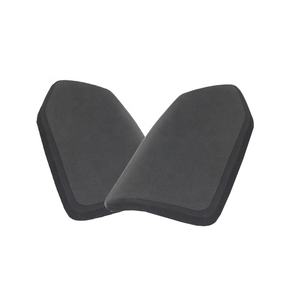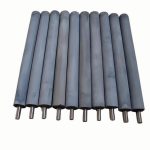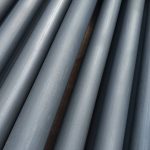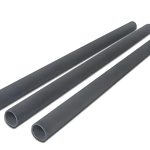Discover Premium Ceramic Products | Durability & Elegance United | Advanced Ceramics
PRODUCT PARAMETERS
Description
Overview of Silicon Carbide Rod
Silicon carbide rods are mainly composed of silicon carbide (SiC). Silicon carbide is a compound of silicon and carbon, and its atoms are connected by strong covalent bonds, forming a crystalline structure. The high covalent bond strength endows silicon carbide rods with excellent mechanical and thermal properties. In addition to pure SiC, there may be trace amounts of other elements or additives in the rods, which are used to adjust certain properties such as improving sintering performance or electrical conductivity.
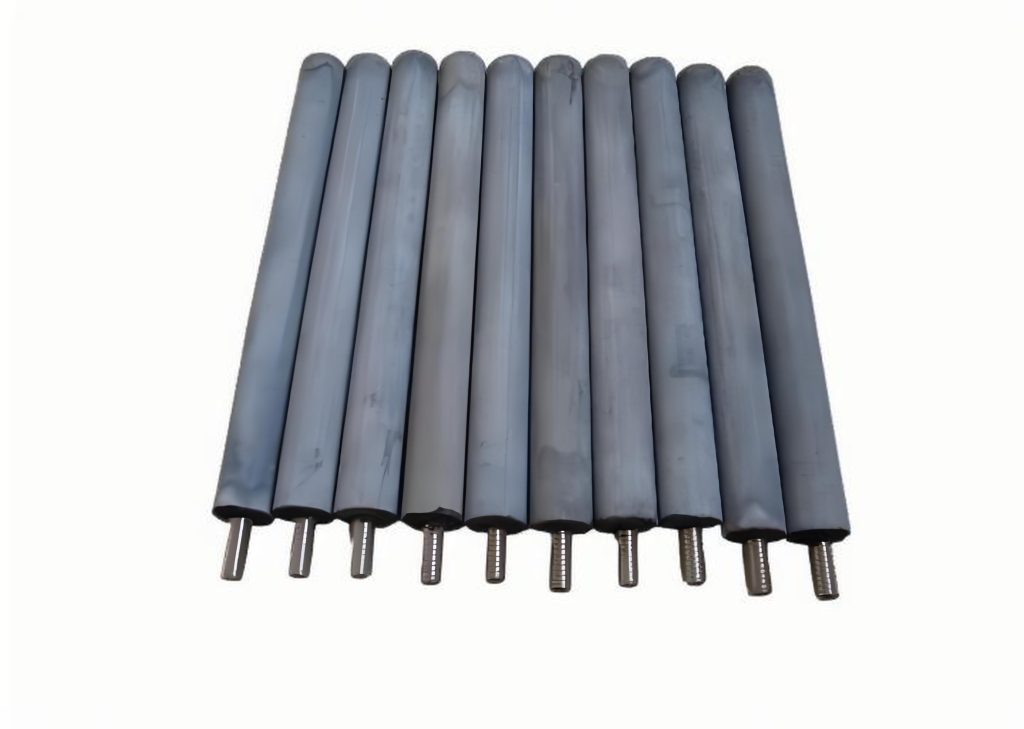
Silicon Carbide Rod
Features of Silicon Carbide Rod
Physical properties
High hardness and high strength: Silicon carbide has extremely high hardness and ranks high in the Mohs hardness scale, which makes silicon carbide rods have strong wear resistance and are not easy to wear and scratch. At the same time, it has high tensile strength and compressive strength and can withstand large external forces without breaking or damage.
High melting point and high-temperature resistance: Silicon carbide has a high melting point, usually above 2700℃, which enables silicon carbide rods to maintain stable performance in high-temperature environments. The normal working temperature can reach about 1450℃, and it can be used continuously for a long time, such as 2000 hours in an oxidizing atmosphere.
Low thermal expansion coefficient: Its thermal expansion coefficient is relatively low. When the temperature changes, the size of the silicon carbide rod changes less. Therefore, when used at high temperatures, the degree of thermal deformation is low, and it can maintain good dimensional stability and structural integrity.
Good thermal conductivity: Silicon carbide rods have high thermal conductivity, can quickly conduct heat, achieve rapid heating, improve heating efficiency, and are also conducive to uniform distribution of heat.
High resistivity and electrical insulation: With suitable resistivity, it can be used to manufacture heating elements and effectively convert electrical energy into heat energy. It has good electrical insulation performance, which can play an insulating role in electrical equipment to prevent problems such as current leakage and short circuits.
Chemical properties
High chemical stability: At room temperature, silicon carbide has good chemical stability to most chemical substances and is not easy to react chemically with acids, alkalis, salts and other substances. Even in high-temperature environments, its chemical stability is still good and can resist oxidation, corrosion and other effects.
Strong oxidation resistance: In a high-temperature aerobic environment, a dense silicon oxide protective film will form on the surface of the silicon carbide rod. This protective film can prevent oxygen from further reacting with the inside of silicon carbide, thereby giving it good oxidation resistance and extending its service life.
Other characteristics
Good processing performance: Although silicon carbide has high hardness, it can be made into rods of various shapes and sizes through appropriate processing technology to meet the needs of different application scenarios, such as threaded, U-shaped, H-shaped, etc.
Long service life: Due to its high-temperature resistance, oxidation resistance, corrosion resistance, good mechanical properties and chemical stability, silicon carbide rods have a long service life under normal use conditions, reducing the frequency of replacement and reducing the cost of use.
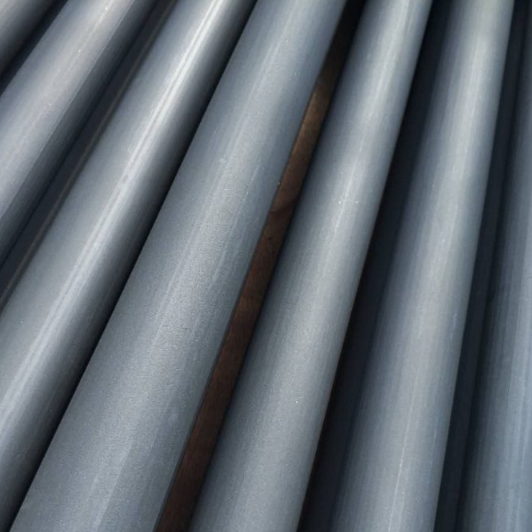
Silicon Carbide Rod
Specifications of Silicon Carbide Rod
| Parameter | Specification Details |
| Material | Silicon Carbide (SiC) |
| Grade | Various grades available (e.g., Sintered SiC, Reaction-Bonded SiC, Recrystallized SiC) |
| Purity | ≥ 98% SiC |
| Hardness (Vickers) | ~2500-3000 HV |
| Density | ~3.10 to 3.21 g/cm³ (varies by grade) |
| Flexural Strength | 400-700 MPa (depending on grade and manufacturing process) |
| Compressive Strength | 2500-4000 MPa (depending on grade and manufacturing process) |
| Elastic Modulus | 400-450 GPa |
| Thermal Conductivity | 120-270 W/m·K (varies by grade and temperature) |
| Coefficient of Thermal Expansion (CTE) | 4.5-4.7 x 10^-6 /°C (at room temperature) |
| Temperature Resistance | Up to 1600°C in air, higher in inert atmospheres |
| Corrosion Resistance | Excellent resistance to most acids, alkalis, and molten metals |
| Electrical Conductivity | Can be electrically conductive or insulating (depends on doping and grade) |
| Magnetic Properties | Non-magnetic |
| Fracture Toughness | 3.5-5.0 MPa·m^0.5 (depending on grade) |
| Abrasion Resistance | Excellent, minimizes wear in abrasive environments |
| Dimensional Stability | High, minimal thermal expansion and contraction |
| Surface Finish | Available in various finishes (ground, polished, etc.) |
| Length Range | Typically from 50 mm to 3000 mm (custom lengths available upon request) |
| Diameter Range | Typically from 5 mm to 200 mm (custom diameters available upon request) |
| Tolerance | ±0.1 mm to ±0.5 mm (varies by size and application requirements) |
| Applications | Furnace components, kiln furniture, nozzles, heat exchangers, wear-resistant parts, etc. |
| Manufacturing Process | Sintering, reaction bonding, recrystallization, hot pressing, etc. |
| Coating Options | Available, e.g., TiN, DLC, ceramic coatings (for enhanced properties) |
Additional Notes:
Grades: Different grades of silicon carbide rods are available, each optimized for specific applications. For example:
Sintered SiC (SSiC): Known for high strength, excellent thermal shock resistance, and good machinability.
Reaction-Bonded SiC (RBSiC): Offers lower density and cost but still provides good mechanical and thermal properties.
Recrystallized SiC (RSiC): Has excellent thermal stability and resistance to oxidation at high
temperatures.
Custom Dimensions: Many manufacturers offer custom lengths and diameters to meet specific application requirements.
Surface Finish: The surface finish can be customized based on the application. Ground or polished surfaces are common, but other finishes may be available.
Coatings: Coatings like titanium nitride (TiN), diamond-like carbon (DLC), or ceramic coatings can enhance certain properties, such as wear resistance or corrosion protection.
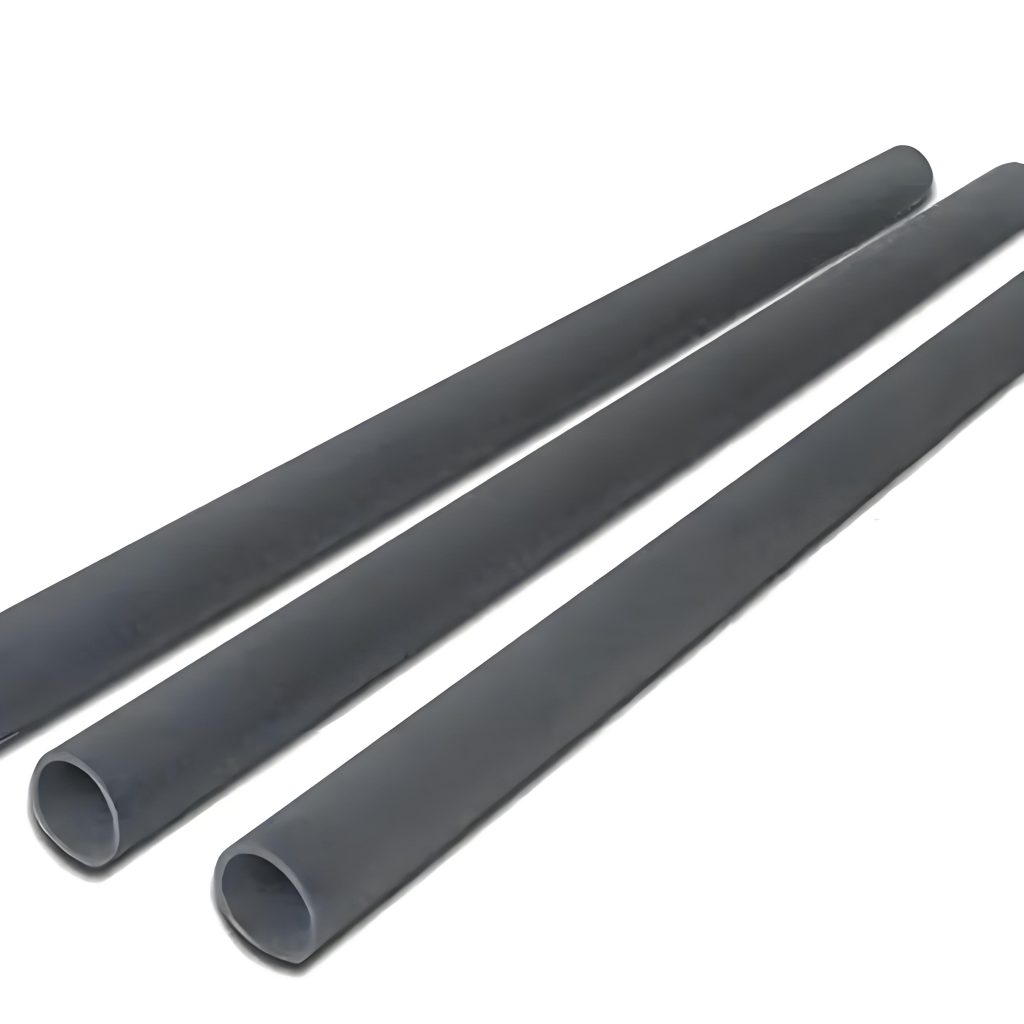
Silicon Carbide Rod
Applications of Silicon Carbide Rod
Silicon carbide rods have a wide range of applications due to their excellent physical and chemical properties:
1.Industrial Furnace Heating Elements
Metallurgical Industry: In the metallurgical field, silicon carbide rods are used in furnaces for melting and heat-treating metals, for example, in the production of steel and non-ferrous metals such as aluminum and copper. They can provide high-temperature heating environments, enabling efficient melting and alloying processes. The high-temperature resistance of silicon carbide rods allows them to operate stably in the high-temperature environment required for metal smelting, usually reaching temperatures above 1000°C.
Ceramic Industry: For the firing of ceramics, silicon carbide rods play a crucial role. They are used in kilns to provide the necessary high-temperature environment for the sintering of ceramic products. The even heat distribution property of silicon carbide rods helps to ensure the uniform quality of ceramic products during the firing process. Different types of ceramics, such as porcelain, earthenware, and technical ceramics, all benefit from the stable and high-temperature heating provided by silicon carbide rods.
2.Laboratory Equipment
Laboratory Furnaces: In scientific research laboratories, silicon carbide rods are used in various types of furnaces for sample heating and testing. For example, in materials science research, when studying the properties of new materials such as high-temperature superconductors or advanced composites, silicon carbide-rod-heated furnaces can provide a precisely controlled high-temperature environment. The temperature-controlled accuracy of these furnaces can reach a few degrees Celsius, which is essential for accurate experimental results.
Chemical Reaction Vessels: They are also used in some chemical reaction vessels that require high-temperature conditions. The chemical stability of silicon carbide rods makes them suitable for use in environments where corrosive chemicals may be present during high-temperature reactions.
3.Semiconductor Industry
Epitaxial Growth Equipment: In semiconductor manufacturing, silicon carbide rods are used in equipment for the epitaxial growth of semiconductor materials. The high-temperature and stable heating performance of silicon carbide rods can provide the necessary temperature conditions for the growth of high-quality semiconductor films. For example, in the production of silicon carbide-based power semiconductors, the precise temperature control provided by silicon carbide rods helps to ensure the uniformity and quality of the semiconductor epitaxial layer.
Diffusion Furnaces: Silicon carbide rods are also used in diffusion furnaces for doping processes in semiconductor manufacturing. The ability to maintain a stable, high-temperature environment is crucial for the accurate diffusion of dopant atoms into the semiconductor substrate.
5.Lighting Industry
Infrared Heating Lamps: Silicon carbide rods can be used to make infrared heating lamps. These lamps emit infrared radiation when heated, which is widely used in drying processes in industries such as the printing and textile industries. In the printing industry, infrared heating lamps with silicon carbide rods can quickly dry inks on printed materials, improving production efficiency. In the textile industry, they are used for fabric drying and heat-setting processes. The infrared radiation emitted by silicon carbide rods can penetrate the fabric to achieve efficient drying and shaping.

Company Profile
Advanced Ceramics founded on October 17, 2014, is a high-tech enterprise committed to the research and development, production, processing, sales and technical services of ceramic relative materials and products.. Since its establishment in 2014, the company has been committed to providing customers with the best products and services, and has become a leader in the industry through continuous technological innovation and strict quality management.
Our products includes but not limited to Silicon carbide ceramic products, Boron Carbide Ceramic Products, Boron Nitride Ceramic Products, Silicon Carbide Ceramic Products, Silicon Nitride Ceramic Products, Zirconium Dioxide Ceramic Products, Quartz Products, etc. Please feel free to contact us.(nanotrun@yahoo.com)
Payment Methods
T/T, Western Union, Paypal, Credit Card etc.
Shipment Methods
By air, by sea, by express, as customers request.

FAQs of Silicon carbide rod
1. What is the maximum operating temperature of a silicon carbide rod?
Silicon carbide rods can typically operate at temperatures up to around 1450 – 1500°C in air. However, in a controlled or inert atmosphere, they can withstand even higher temperatures. The high-temperature resistance is due to the strong covalent bonds in the silicon – carbide structure and the formation of a protective silicon – dioxide layer at high temperatures, which helps prevent further oxidation and degradation.
2. How do you install a silicon carbide rod in a furnace?
When installing a silicon carbide rod in a furnace, it’s crucial to ensure proper electrical connections. The rods are usually inserted into specially designed holders or fixtures that provide both mechanical support and electrical contact. The connections should be tight to minimize electrical resistance and heat loss at the connection points. Additionally, sufficient spacing between the rods and proper insulation around them is necessary to ensure even heat distribution and to prevent short-circuits.
3. Can silicon carbide rods be bent or shaped?
Silicon carbide is a hard and brittle material. While it’s not easy to bend like a flexible wire, it can be machined and shaped to some extent using advanced grinding and cutting techniques. Specialized equipment and processes are used to form silicon carbide rods into different geometries, such as U-shaped or other custom shapes required for specific applications. However, these processes need to be carefully controlled to avoid cracking or fracturing the rods due to their brittleness.
4. How long do silicon carbide rods last?
The lifespan of a silicon carbide rod depends on several factors. In normal operating conditions with appropriate temperature and load and in an environment where chemical corrosion is minimized, they can last for thousands of hours. For example, in a well-maintained industrial furnace with a stable operating temperature around 1300°C, a silicon carbide rod may last for 2000 – 3000 hours. However, if the rod is subjected to rapid temperature changes, overloading, or a chemically aggressive environment, its lifespan can be significantly reduced.
5. Are silicon carbide rods electrically conductive?
Silicon carbide rods have a certain level of electrical conductivity. They are semiconductors. Their resistivity can be adjusted depending on the specific application requirements. This property allows them to be used as heating elements, where the electrical current passing through the rod generates heat due to the resistance of the material. The electrical conductivity also makes it possible to control the heating rate and temperature of the rod by adjusting the applied voltage and current.
REQUEST A QUOTE
RELATED PRODUCTS
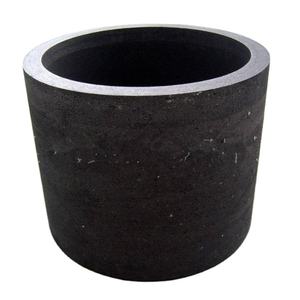
Bulletproof High Hardness Silicon Carbide Ceramic SiC Ballistic Plates
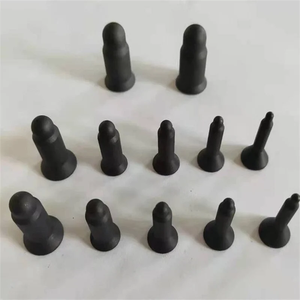
High-temperature Extraction Silicon Carbide Ceramics Graphite Saggar
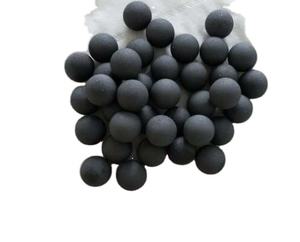
Thermal Resistance Rsic Sic Square Beam Silicon Carbide Beams Ceramic Tube Pipe for Industrial Kilns
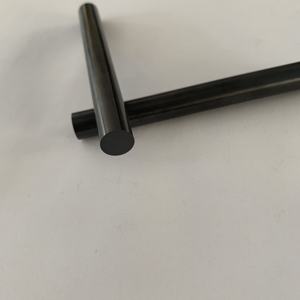
Silicon Carbide Sic Ceramic Heater for Wood Pellet Burner Ignition 767A-357
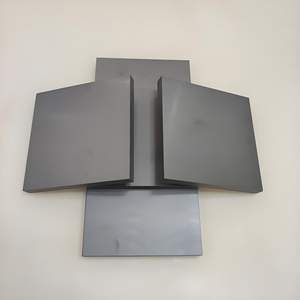
High Medium 100mm White Oxide Aluminum Grinding Wheel Abrasive Disc Disc Diamond Steel Ceramic Zirconia Silicon Carbide OEM
